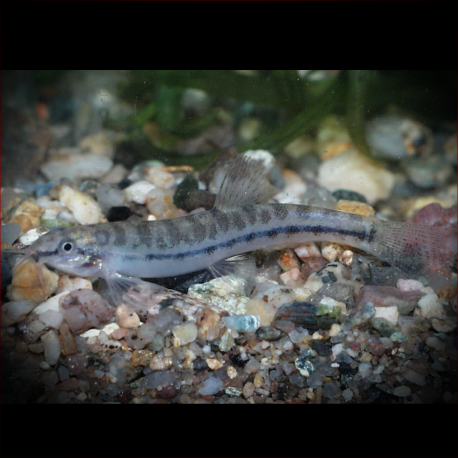More info
Datasheet
| Minimum Tank Size | 30 litres / 7.93 US gallons |
| Maximum Size | 4.5cm / 1.77inches |
| Temperature | 22.8°C / 73.04°F - 26.1°C / 78.98°F |
| Hardness | 2-15ºdH |
| pH | 6.0-7.5 |
Behaviour:
Lepidocephalichthys spp. exhibit peaceful behavior towards tankmates and conspecifics, with no reported instances of aggression. They tend to thrive in groups of four or more individuals. The presence of fish occupying the upper part of the water column, such as Trichopodus, Trichogaster, Trichopsis, or certain Danio species, can help reduce their timidity. Sand-dwelling loaches from select families can be compatible tankmates, although caution is advised due to potential territorial or aggressive behavior. In a community tank, species like Badis badis, Acanthocobitis zonalternans, and Lepidocephalichthys guntea can be suitable companions for L. goalparensis.
Feeding and Diet:
Being micropredators, Lepidocephalichthys spp. primarily feed on insect larvae and small crustaceans sifted from the substrate. In aquariums, they accept sinking dried foods but should also be provided with live or frozen fare like Daphnia, Artemia, and bloodworms for optimal nutrition.
Reproduction & Dimorphism:
While the reproductive behavior of Lepidocephalichthys spp. in the wild is presumed to be seasonal, successful breeding in captivity has not been documented. Mature males display enlarged pectoral fins with fused innermost rays forming a lamina circularis, while adult females are typically larger and heavier-bodied.
Habitat and Distribution:
Lepidocephalichthys Goalparensis is commonly found in shallow, slow-moving portions of streams, swamps, oxbows, and paddy fields with heavily vegetated or debris-laden substrates. They inhabit regions with fluctuating water clarity and depth, adapted to survive in temporarily flooded areas during the wet season and stagnant habitats during dry periods. The species is native to the Brahmaputra, Ganges river drainages, and parts of the upper Irrawaddy basin in Nepal, northern India, Bangladesh, and Myanmar.
Aquarium Setup:
To ensure the well-being of Lepidocephalichthys spp., it is essential to provide a soft, sandy substrate since they spend time buried or partially submerged. Tank decorations like water-worn rocks, driftwood, and leaf litter should be included to create hiding spots and shaded areas. Dim lighting is preferred unless plants are intended to be grown. As these loaches come from slow waters, high flow rates should be avoided, but oxygenation is recommended. Care must be taken to prevent small individuals from entering filter intakes, as these fish have been known to jump, especially when first introduced.

